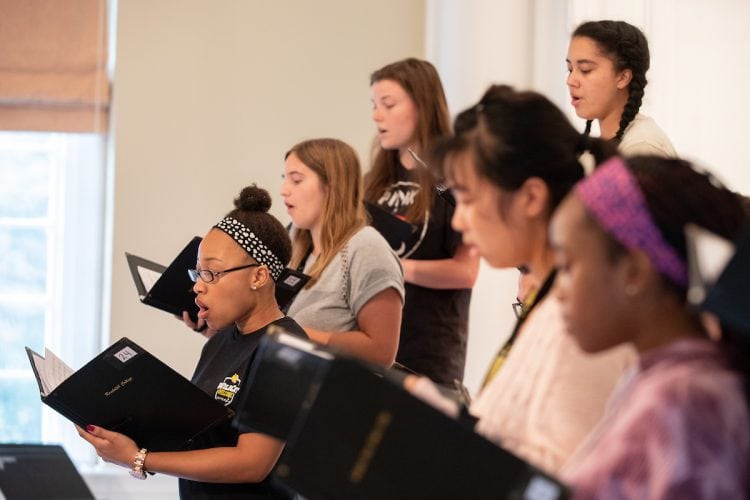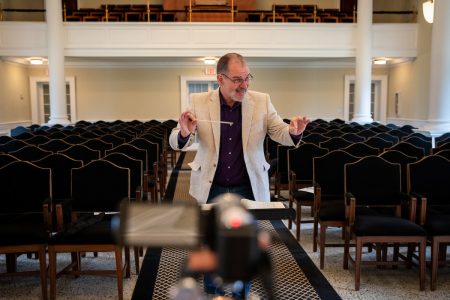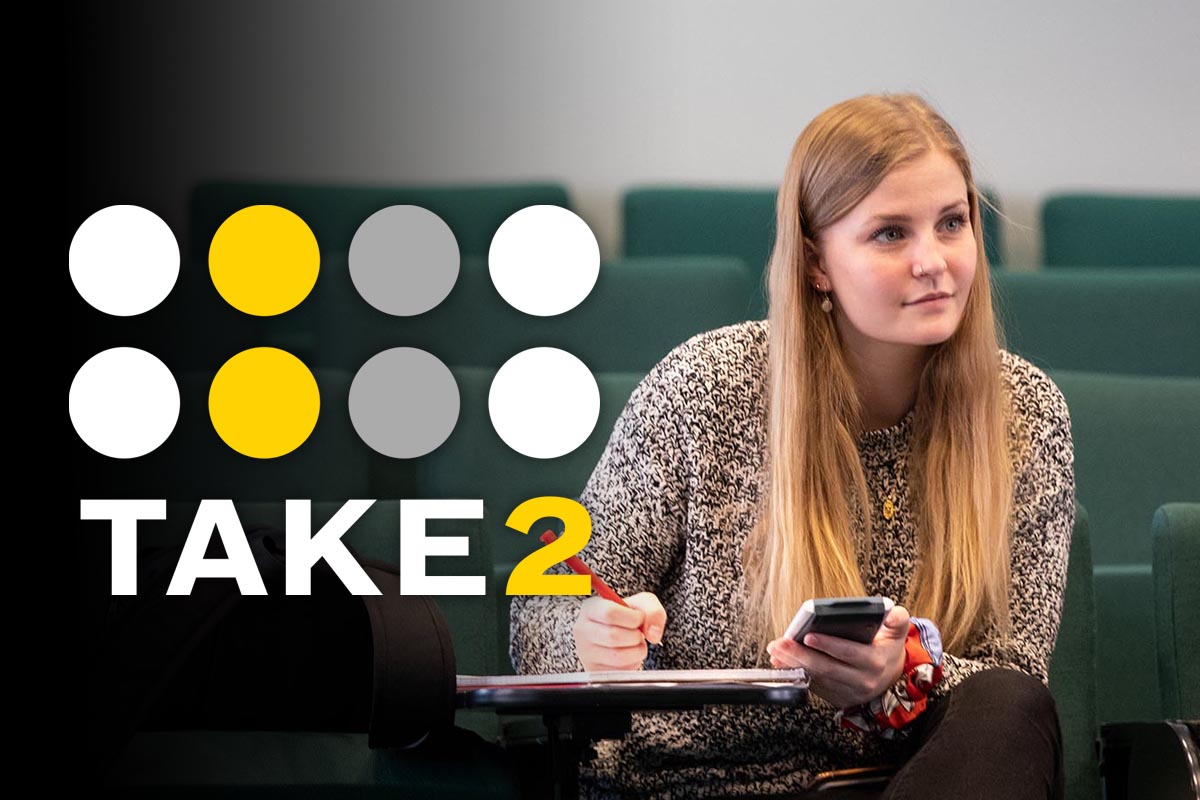Spring concert brings students, alums, and community members together—virtually

The Randolph College Chorale rehearses together in September. Because of COVID-19, their spring concert has moved online as a series of performances posted on the College’s YouTube page.
When music professor Randy Speer began collecting video submissions from his students to assess their progress this spring, he had another goal in the back of his mind: To eventually compile them together to create a virtual spring concert.
“It was my hope, I should say,” Speer said last month, when he was in the throes of editing. “But until I actually got all of the submissions, and really started working on it, I started seeing how good it could actually be and what kind of product we would have. Until then I had no idea, really.”
The final product features chorale, chamber orchestra, and Touch of Harmony students performing alongside alumnae and alumni, professional musicians, and community members. Each group performed three selections, for a total of nine videos that can be found on the College’s YouTube page.
For each piece, Speer began by creating video or audio click tracks that participants could rehearse with and then use to submit video of their final performances.

Music professor Randall Speer records himself conducting with an accompanist in March. The video was then sent to chorale and orchestra students, so they could record themselves performing along to the same master track for what would become the virtual spring concert.
“I started out with very specific instructions, specific to each student and the videos they submitted. Then, eventually, I moved to just broader instructions, typical of what I would normally give in a real rehearsal: ‘Altos, let’s all make sure we’re reviewing this rhythm in these few measures,’” he said. “I would release the video in progress so they could hear themselves and see what I’m talking about. They were able to refine the performances from week to week in addition to getting the practice in to make sure they were submitting something that they individually were happy with.”
While it could never replace the in-person rehearsal process, which is so much about collaboration and interaction in real time, Speer and his students were able to make it work.
“An unintended consequence of having to submit videos, especially on the students’ side, and many of them shared this with me, is they didn’t want to submit something they weren’t happy with,” he said. “So it meant that they were practicing. They were doing the work and if they didn’t get a take they liked, they’d do another one.”
That was the exact experience Joe Vazquez ’20 described, frustrations and all.
“If you screw up in the middle of rehearsal, you circle that and make sure to focus on it. If you screw up in the middle of recording, and you’re at the end of the recording, it’s far more frustrating,” said Vazquez, a singer and organist who submitted videos for both chorale and orchestra. “Some of them, I would do one take and get lucky. Others, I’d say it took about four to five takes each. It could take a good hour and a half, and that was just for chorale.”
George Darko-Boateng ’20, who played trumpet in the orchestra, said juggling so many elements at once took some getting used to.
“Having to watch him conducting on a screen and read music on a different sheet, with background music playing, that was a whole different thing for me,” he said. “But once I did it once or twice, I got the hang of it. I could do it quickly and easier than before.”
In addition to students, Speer also reached out to other musicians to round out the ensembles.
He ended up with participation from two faculty members, 13 area professionals, 14 alumnae and alumni, and 16 students.
There were a total of 50 submitted videos, he said, sent in from as far away as Trinidad and Tobego. One local professional string player submitted two videos, playing a different instrument in each one, so “she’s sitting in two sections of the orchestra simultaneously.”
“The contributions of the alumni and the professionals really, in a very real way, made it possible for me to evaluate the students’ performance in the second half of the semester, when there was no other means to do so,” he said. “It was fantastic the support we have from them.”
The spring concert always features local professionals, so Speer was glad he could include some of them this year.
“These musicians were out of work,” he said. “We may not have been able to pay them as much as we normally would, but we were able to engage them in some way.”
Talking about the project again last week, Speer said he’d learned quite a bit from the process.
“Some of it, I intend to incorporate into my regular teaching, and some will definitely come into use this fall semester, as continued creative solutions to social distancing will be required,” he said. “I am very grateful to the area professionals willing to undertake this experiment, and especially to our alumnae and alumni, who reminded me of just how wonderful, and far flung, our extended community is.”
The spring concert can be found here.
Tags: chamber orchestra, chorale, music department, randall speer, Spring 2020 Concert, Touch of Harmony
